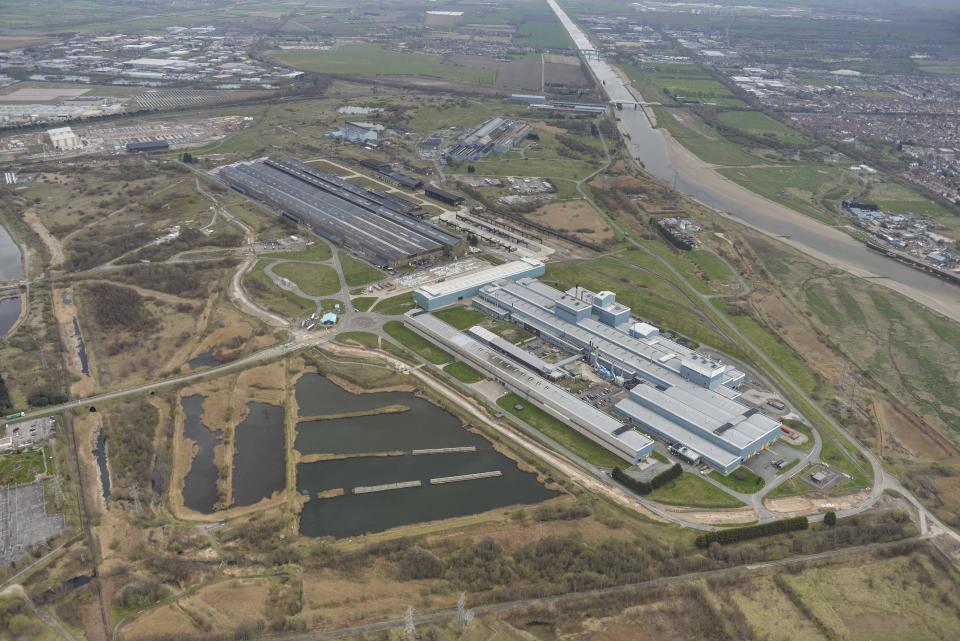Demand for construction products and building solutions that can demonstrate better sustainability credentials are being seen in specifications and throughout the supply chain. In-keeping with net zero carbon targets, this demand is most often expressed in terms of lower carbon emissions – whether by a product having lower embodied/upfront carbon, helping to reduce a building’s operational carbon, or decarbonising on a manufacturing site level.


Operational carbon is, to a greater degree, being driven down through legislation and building regulations, but can also be supported by product manufacturers working with clients and specifiers to understand requirements and designing products accordingly to achieve material and design efficiencies. By contrast, responsibility for the carbon footprint of product manufacturing sits more with individual manufacturers.
Manufacturers want, and need, to be seen to be acting to meet the supply chain’s expectations. At the same time, however, traditional manufacturing cannot reduce its carbon footprint to zero overnight.
Achieving an appropriate balance of short- and long-term action can be considered as ‘acting today to protect tomorrow’. By working to reduce their carbon footprint transparently and responsibly, manufacturers can also implement a broader approach to sustainability that aims to avoid unintended consequences in the future.
Carbon footprint reduction will be different for every manufacturer
The UK was the first major economy to make net zero a legally binding target, with 2050 the date set to achieve it. Government has also put in place interim targets to achieve a 68% reduction in emissions by 2030, and a 78% reduction by 2035 on 1990 levels
These targets will require significant contributions from industry, and the ability of different manufacturing sectors – including within construction – to make the necessary changes in those timescales will vary.
Many industries, steel included, are in frequent contact with government to help them understand the progress that each is making. Nevertheless, the challenges of long-term planning do not excuse the need to take action on reducing carbon footprints today.
Tata Steel, for example, have set their own targets to help drive the action that is necessary for them to contribute to the broader UK goals. The aim is to have reduced CO2 emissions by 30% by 2030, and to offer carbon neutral steelmaking by 2050. ‘Carbon neutral’ means that some carbon offsetting is likely to be needed in future. By addressing areas that can be tackled now, the intention is to keep that offsetting to a minimum at a later date.
While this is Tata Steel’s goal, different manufacturers in different sectors will have their own carbon footprint reduction plans that are completely … well, different!
How carbon footprint reduction is being implemented at Shotton Works
Even within a manufacturer like Tata Steel, there is no single solution that can be enacted at each site it operates.
The Shotton site at Deeside in North Wales carries out galvanising and painting processes to create innovative pre-finished steel products, as well as manufacturing a wide variety of cladding systems. Shotton’s operations generate almost 70kT of CO2 emissions per year from these processes
Decarbonisation of heavy steelmaking is a significant and long-term challenge, which makes it all the more important that strides are made in Shotton’s operations. Even then, the Shotton site has been active for 125 years, so reducing the site’s carbon footprint is not the work of a moment and a lot of steps have already been taken to focus on waste reduction, reuse of materials, energy efficiency drives such as LED lighting etc
To help establish a forward plan of action, an external auditor was brought in to assess the site. The auditors identified potential action points relating to energy use and carbon emissions, which were grouped depending on whether they could be addressed in the short, medium or long term. The aim was to identify ‘quick wins’, as well as the areas that required longer term focus and pulling everything into a coherent plan.
The figure of almost 70kT was arrived at by assessing Scope 1 and Scope 2 emissions as direct impacts the site can influence. The focus was on what can be achieved at the Shotton site itself, aimed to drive improvements within its own processes.
Short-term activities are already being implemented, including switching offices and loading bays to LED lighting, the replacement of onsite petrol and diesel vehicles with electrical vehicles and also looking at alternative fuel sources for the rest of the onsite fleet.
In April 2022, the Shotton site’s electricity supply was changed so that 100% of it is sourced from renewable sources – a mix of solar, wind, biomass and hydro – that are certified by UK Renewable Energy Guarantees of Origin (REGOs) and therefore zero carbon. This step alone has achieved a 16% reduction in the annual CO2 emissions generated at the site which contributes a significant impact in the overall carbon reduction target of 20% for this year.
While this carbon reduction is a headline-making figure, it is simply one of many steps that will be taken in the coming years feeding into the reduced CO2 intensity for the products made at the site. The aim is to reduce the overall electricity demand at Shotton, and to meet that demand by generating energy on site. Within the next five years or so, installing on-site renewables will start that process, followed by the UK grid decarbonising by 2035.
Monitoring of the strategies that are implemented at Shotton will be ongoing, and the site has a recently obtained ISO 50001 Energy management standard-certified energy management system to complement the existing suite of ISO standards. Achieving this certification requires robust metering and monitoring, and a commitment to controlling energy use by a range of energy improvement activities, among other things.
Carbon footprint reduction as part of a wider sustainability strategy
Long-term sustainability will not be achieved simply by meeting a 2050 target for decarbonisation. A positive legacy for the planet requires much more, which is why the Shotton site is working across four different, but equally important, sustainability themes as part of its overall long term sustainability commitment.
Carbon footprint reduction is one of those principles, with the other three being Sustainable products and services to support sustainable construction, Biodiversity protection, and Material efficiency.
Short-term action needs to support all of these key principles in delivering a sustainable future. Shotton’s Works carbon footprint reduction is a key part of the wider change that is needed, and supports the work on the other three principles, as well as achieving CO2 reductions in its own right.
Related blog articles:
How can manufacturers help specifiers to make sustainable product choices?
It is clear that the biodiversity emergency is as urgent and important as the climate emergency
How can construction product manufacturing use materials more efficiently and reduce waste?



































































































































































































































